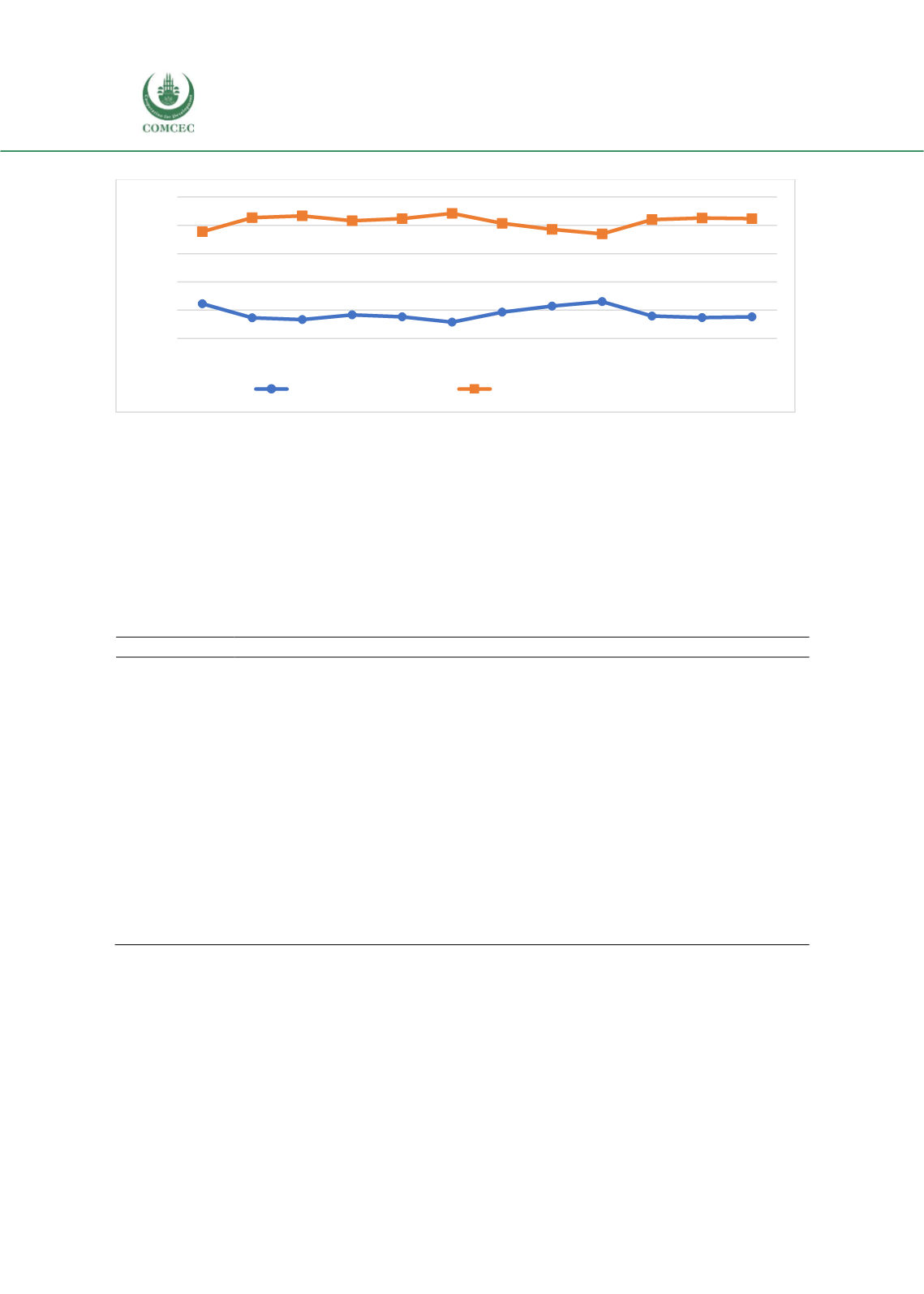

Analysis of Agri-Food Trade Structures
To Promote Agri-Food Trade Networks
In the Islamic Countries
116
Figure 64: Trends in Sources of Tunisian Fish Products Imports, 2005-2016
Source: UN Comtrade.
Table 29 repeats the disaggregated analysis above for major import products. Linkages with
countries in the Mediterranean area are again very important. There is a particular role played
by EU countries in products like wheat, cereals, and maize that is suggestive that preferential
trade arrangemetns play a key role in shaping trade flows, as more distant but globally
competitive suppliers play a secondary role, with the exception of Ukraine. Imports in sugar and
soya bean oil are quite concentrated geographicall. Links with more distant countries are
important for products like oil seads (Latin America, as well as India and Nigeria), and tobacco
(African countries.
Table 29: Leading Import Product - Origin Combinations for Tunisia, 2016.
Product
Leading Import Origins
Wheat
Ukraine, Canada, Italy, France, Greece, UK, Russia, Spain, Bulgaria, Romania.
Other cereals
Ukraine, UK, Russia, France, Finland, Argentina, Estonia, Romania, India, Canada.
Maize
Ukraine, USA, Argentina, Serbia, Romania, Paraguay, Bulgaria, Brazil, France,
Turkey.
Sugar
Brazil, Uruguay, France, Mauritius, Spain, Belgium.
Animal feed
Argentina, Italy, France, Spain, Brazil, USA, Germany, Ukraine, Maurtania,
Portugal.
Tobacco
Serbia, Turkey, Brazil, Switzerland, France, Bulgaria, Greece, Malawi, Germany,
Zimbabwe.
Oil seeds
USA, Paraguay, Brazil, Sudan, Ukraine, Turkey, Argentina, Egypt, India, Nigeria.
Cork and
wood
Sweden, Finland, Austria, France, Romania, Russia, Italy, Germany, Latvia,
Estonia.
Soya bean oil
Russia, Argentina, Italy, USA, Brazil, Canada, Netherlands, Spain, France.
Sugar
products
Ukraine, Brazil, India, Morocco, Egypt, Germany, Netherlands, France, Algeria,
Turkey.
Source: UN Comtrade
Figure 65 shows the import side of degree centrality. It is immediately apparent that Tunisia
tends to deal with fewer source markets than destination markets when it comes to leading
products. Moreoever, the level of concentration in geographical terms on the import side is fairly
constant over time, with no clear trend in evidence. Whereas Tunisia is clearly diversifying its
export base, the data suggest that trade relations on the import side tend to exhibit greater
hysterisis, in the sense that historical trade relations tend to be prolonged in time and do not
fluctuate or grow in the same way as links on the export side do.
0%
20%
40%
60%
80%
100%
2005 2006 2007 2008 2009 2010 2011 2012 2013 2014 2015 2016
Imports OIC countries
Imports non-OIC countries
















